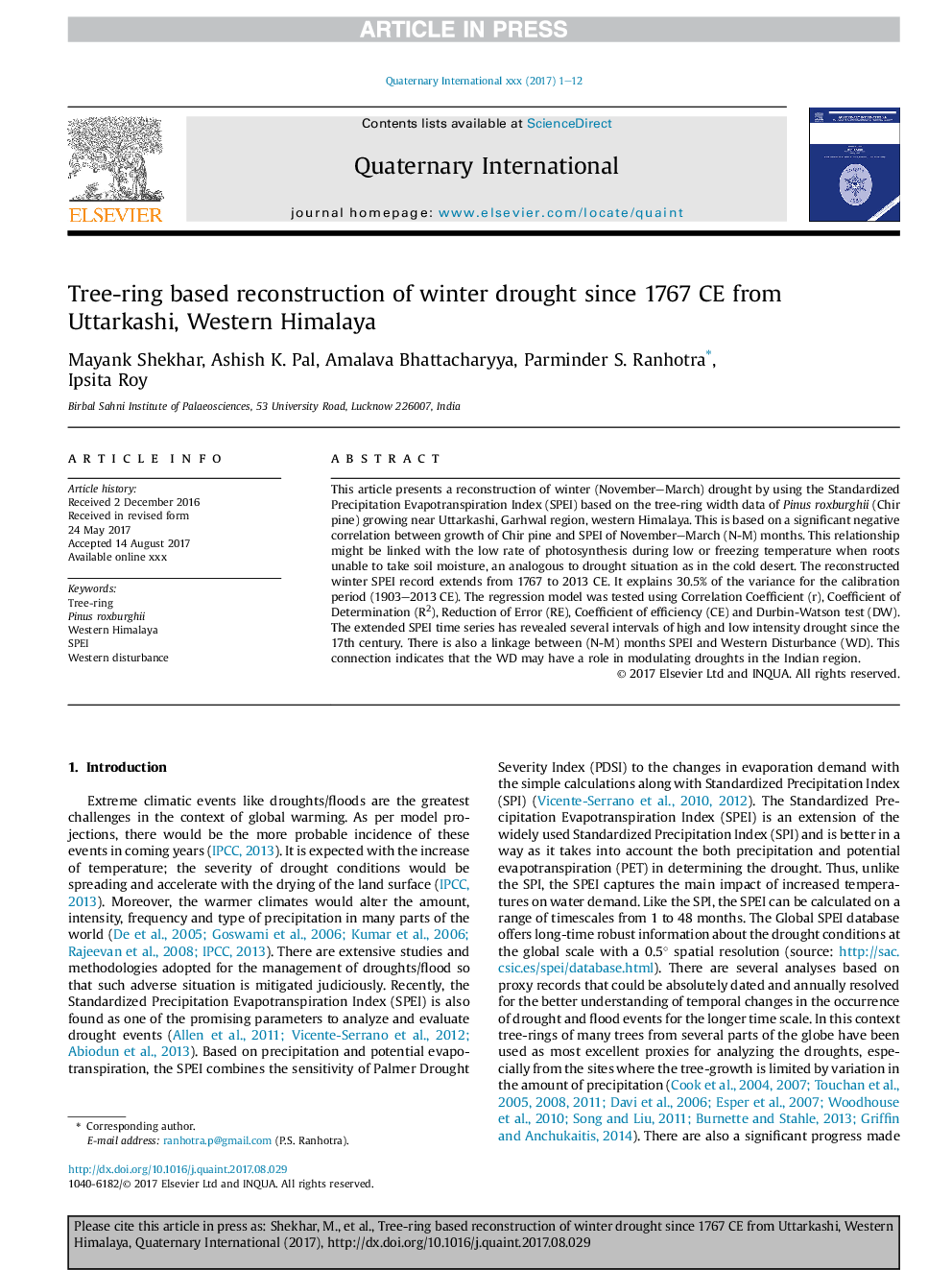| Article ID | Journal | Published Year | Pages | File Type |
|---|---|---|---|---|
| 7449415 | Quaternary International | 2018 | 12 Pages |
Abstract
This article presents a reconstruction of winter (November-March) drought by using the Standardized Precipitation Evapotranspiration Index (SPEI) based on the tree-ring width data of Pinus roxburghii (Chir pine) growing near Uttarkashi, Garhwal region, western Himalaya. This is based on a significant negative correlation between growth of Chir pine and SPEI of November-March (N-M) months. This relationship might be linked with the low rate of photosynthesis during low or freezing temperature when roots unable to take soil moisture, an analogous to drought situation as in the cold desert. The reconstructed winter SPEI record extends from 1767 to 2013 CE. It explains 30.5% of the variance for the calibration period (1903-2013 CE). The regression model was tested using Correlation Coefficient (r), Coefficient of Determination (R2), Reduction of Error (RE), Coefficient of efficiency (CE) and Durbin-Watson test (DW). The extended SPEI time series has revealed several intervals of high and low intensity drought since the 17th century. There is also a linkage between (N-M) months SPEI and Western Disturbance (WD). This connection indicates that the WD may have a role in modulating droughts in the Indian region.
Related Topics
Physical Sciences and Engineering
Earth and Planetary Sciences
Geology
Authors
Mayank Shekhar, Ashish K. Pal, Amalava Bhattacharyya, Parminder S. Ranhotra, Ipsita Roy,
